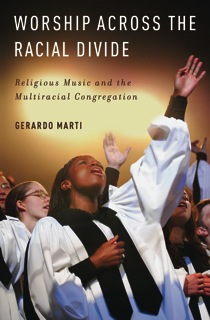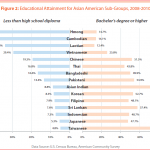 In conducting interviews for my book Worship across the Racial Divide, I enjoyed talking with a Caucasian worship leader at an outdoor café on Los Angeles’ Westside. We drank coffee as he described his enthusiasm for racial diversity and the type of music he worked into each Sunday service. Then, in the middle of our conversation, he suddenly blurted out, “I just wish I could be black!”
In conducting interviews for my book Worship across the Racial Divide, I enjoyed talking with a Caucasian worship leader at an outdoor café on Los Angeles’ Westside. We drank coffee as he described his enthusiasm for racial diversity and the type of music he worked into each Sunday service. Then, in the middle of our conversation, he suddenly blurted out, “I just wish I could be black!”
I was struck. Although it was not the first time I had heard a white person admire black music performers and styles, this blunt yet seemingly natural statement stuck out as one of the most significant. This leader’s abrupt remark crystallized observations that had been building on racialized perceptions of worship over the previous months. Over and over again, non-blacks expressed a profound belief in the ability of African Americans to attain a deep, emotional, and, for many, inspiring worship through sacred music. Even African Americans themselves agreed that they had a racially-specific connection to worship.
What I found over the course of two years was that African Americans occupy a unique place in the moral economy of multiracial congregations. Like the canary in the coal mine, the assumption across America is that if there are few African Americans in a congregation, then the congregation’s culture is racially “toxic” against blacks. Congregational leaders serious about addressing racial issues are trying to alter their cultures. Attracting African Americans is now a major priority for many non-black churches, and this priority influences the type of music being introduced.
Gospel music is generally thought to be the music required to successfully bring African Americans into a congregation. This belief is driving changes in musical liturgy. “Gospel is a very African American thing,” one Asian musician said. “The African American spirituals we sing intentionally acknowledge the African American members of the church,” said a white choir member. A Black female church member said, “I’d say Black people do mostly enjoy gospel music.” Another Black female and member of her choir referred to the more diverse of two Sunday morning services and said, “That service is for the African Americans predominantly, and the music is different. More gospel.” Blacks enjoy gospel, therefore gospel is required. The introduction of gospel music becomes a form of instrumentalism as a musical genre that is intended to achieve a particular effect.
My book provides an extensive look at this belief in the need for racially-specific music and shows that specific types of music are not necessary for the successful racial diversification of churches. Of course, not everyone agrees with this, and reactions to this newly research are only just beginning to appear. Here I will stress that it is important to approach the notion of “superiority” of Black worshippers by recognizing that the image of blacks orients around a universally held idealized image of Blacks singing gospel. A white female church member said, “I love black gospel music—like when Whoopi Goldberg did it in the movie Sister Act.” Another white female church member in another congregation said, “They all really know how to sing.” African Americans by virtue of skin color – even before people hear them sing – are bestowed authority on worship and connection to God in multiracial churches. I’ve known of some African Americans being recruited to the choir or to the worship committee the day they first walked through the door. Indeed, I found that the fewer the African Americans in a multiracial church, the more they are emphasized by members, and each African American attending becomes imbued with even more authority on music and worship.
The universal assumptions regarding the nature of Black worship radically separates experiences between racial-ethnic groups, makes racial groups absolute, and reinforces the dynamic of “Black performers” for non-Black audiences. When church leaders mix notions of black superiority of worship, the need for gospel music to be included in musical liturgy, and the requirement of black authenticity in the performance of gospel music, such music becomes the basis for separation on the basis of race. If only Blacks can truly perform gospel music (e.g., they have soul), incorporating gospel music creates a tension between “black performers” and non-black audiences. All combined, the beliefs surrounding Black gospel music have the potential to creating conditions for separation and difference rather than unity and togetherness. Insisting on gospel music inadvertently exaggerates, rather than ameliorates, one of the fundamental sources of racial divisions in America – beliefs of racial essentialism.
In the end, what’s most surprising is that the incorporation of diverse people of different racial and ethnic backgrounds into liturgy does help achieve diversity — but not through the selective incorporation of racially-specific styles of music. As one pastor wrote in response to his reading of the book, shaping a caring community through practice and performance is far more important.











